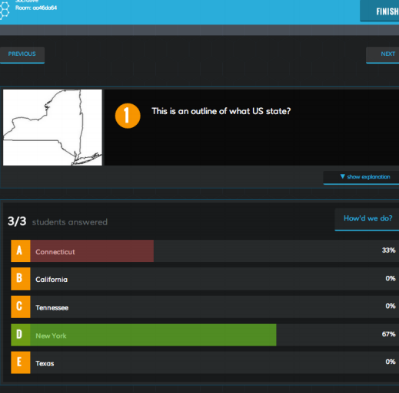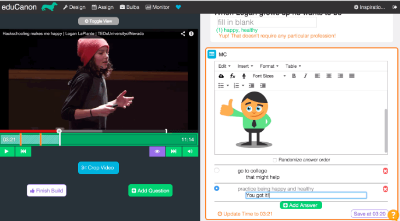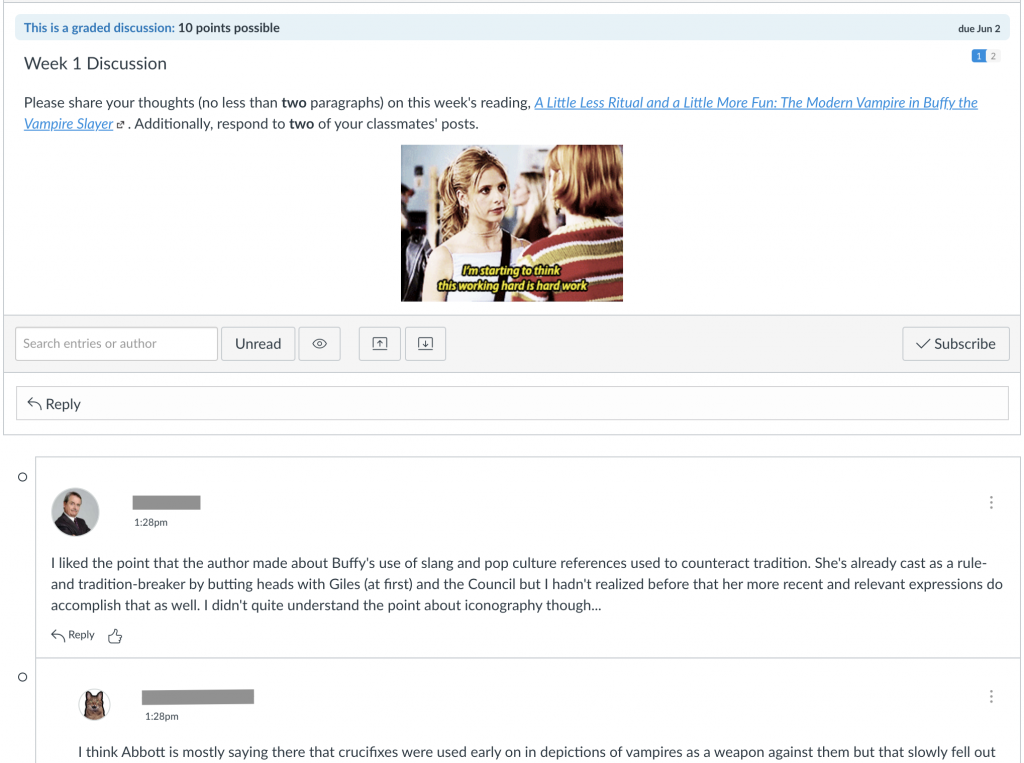Fall 2014 Faculty Showcase Series
In November and December of 2014, we invited Emerson faculty with exemplary use of technology in their instruction to share their methods and impact with other members of the community.
| Presenter | Department | Topic |
|---|---|---|
| Paul Mihailidis | Marketing Communication | Socrative, Storify |
| Ruth Grossman | Communication Sciences & Disorders | EduCanon*, Whiteboards |
| Janet Kolodzy | Journalism | WordPress |
| Daniel Kempler | Communication Sciences & Disorders | Canvas |
| Jena Castro-Casbon | Communication Sciences & Disorders |
In addition to introducing the tool and sharing a little bit about how it operates, all of the presenters offered some insight into its success in their course.
Every presentation focused on a different technology, but there were a few common goals:
- Facilitating communication to improve the classroom experience.
- Giving students a public forum for their work to improve its quality and relevance.
- Building learning objectives around the technology that will help to accomplish them.
Both sessions were live-streamed using Adobe Connect, which served as a digital classroom and allowed people who couldn’t attend in person to listen, ask questions, and give feedback.
ROLL CALL
How well are your students understanding your lectures? How valuable would it be to know this when preparing tomorrow’s lecture? How about in the middle of class, before moving on to the next topic?

Let’s just talk whiteboards for a moment. Of any technology in the faculty showcase series, I was most impressed with the simplicity of dry erase markers on personal whiteboards distributed to each student at the start of class. Ruth Grossman highlighted the benefits: easy to acquire, easy to use, the insight of a pop-quiz with the atmosphere of a game show.
Grossman encouraged talking about the purpose of the process and stressed 100% participation for every question. Once students adopt this platform you’ll be better able to gauge their understanding of topics as they’re presented and adjust lessons on the fly.
Whiteboards aren’t the only tool that can get a quick read on the room. If you’re familiar with clickers, a polling technology with remote-controlled units, you understand that hardware and software can come together to capture students’ responses to questions digitally.

For a large class, Paul Mihailidis made use of Socrative, web-based polling software that allows anyone to use a mobile device to answer questions that have been prepared in advance or impromptu. He recommended it for use with sections of 60 or more students and found it to be a powerful way to guide the focus of smaller breakout groups.
This kind of data can also be useful outside of the classroom. Ruth Grossman highlighted her use of eduCanon* to annotate recorded lecture materials. These videos play back just like any YouTube clip, but, at predetermined time-stamps, the recording will pause and present a question to the viewer that they must answer to continue watching.

Grossman got overwhelming feedback in her course that multiple-choice questions were helpful when presented at the times she specified in the clips. By providing insight with the responses, the students could see the answer in the context of the lesson and also learn why other answers were incorrect.
RISING TO THE OCCASION
While Grossman used eduCanon with her own recordings, the tool can be paired with any publicly visible YouTube clip. As this trend grows, it’s important for web users to be savvy about what resources they’re utilizing. To this end, Paul Mihailidis challenged his students to create narratives that make use of this digital gluttony of information.

Storify is part word processor and part search engine. It lets you do your research and writing side by side so that the evidence becomes part of the story. Mihailidis uses this tool experimentally and treats it as an opportunity to help build an understanding of what makes a source credible.
In Janet Kolodzy’s courses, budding journalists face similar challenges in their research for the Survive and Thrive project. Visit surviveandthriveboston.com and you’ll find articles that were prepared using WordPress, a self-publishing platform.

Each student commits to a topic and writes their post with a shared audience in mind. They are collaborating to tell their own stories in the context of a larger one. Kolodzy appreciates WordPress for its ease-of-use and real-world application and believes that students take greater ownership in their work when publishing online.
EXPLORING DIGITAL SPACES
Synchronizing a technology with course learning objectives is an art. In Jena Castro-Casbon’s Connecting Online group she crafted a meaningful tool for her graduate students that also enhanced the lives of the clients they supported through the Robbins Speech, Language, and Hearing Center. This is an example of Facebook at its finest.

Castro-Casbon created a closed Facebook group that she, her students, and the clients joined to connect privately without revealing their interactions beyond the group or personal account details to one another. Over the course of the semester, the students guided the clients through the communication challenges and hesitations they had while educating them on the social customs prevalent in the platform.
With Castro-Casbon’s administrative oversight the students improved in their ability to support the clients. The clients, though, got a different benefit – they left feeling confident in their ability to communicate with friends and family in a previously daunting digital space. This was a successful match between the technology implemented and the educational goal.

Daniel Kempler also made use of a digital space to improve communication. He wanted his students to be able to have professional conversations on industry topics online so that they would be able to better connect with their colleagues as they entered the professional realm. Utilizing a few key features in a Canvas course, Kempler had his students work through two assignments.
In one, he asked students to share a journal article and comment on those selected by their peers. Questions on why a treatment worked or didn’t and what could be done differently fostered thoughtful discussion from students that might have otherwise been silent in a classroom.
In his second assignment, Kempler assigned a short paper and had students break into small groups. He asked them to collaborate outside the classroom but did not designate a particular technology to facilitate the group work. Students suggested that they would have benefited more from completing this assignment during class due to the confusion around how and when students would contribute to the shared effort.
Similar to the other projects reviewed, both of these assignments generated valuable feedback and illustrated the importance of the relationship between course goals and the tools used to achieve them. The Fall 2014 Faculty Showcase highlighted just a handful of the creative ways technology can enhance education and demonstrated some of the challenges and rewards of innovation.
As always, if you have any questions about bringing new technology into your teaching, don’t hesitate to contact ITG by emailing itg@emerson.edu or by calling 617-824-8090.
*EduCanon no longer operates but Panopto has a similar function where you can add questions are several points in a video.
**This screenshot has been updated as of January 2020 and does not depict a discussion from one of Daniel Kempler’s courses.

